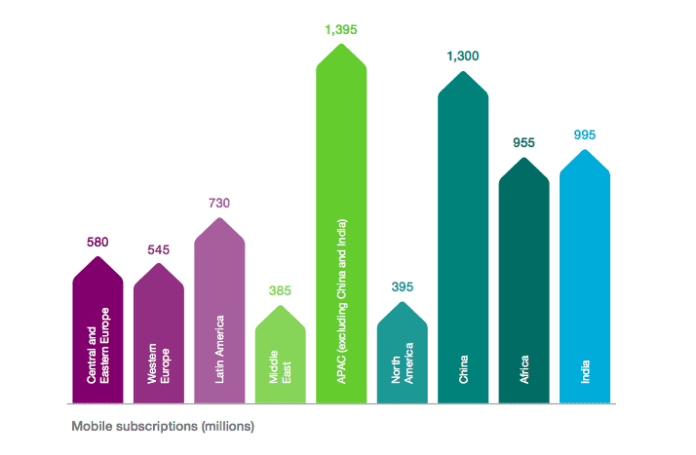Ericsson Mobility Report shows subscriber and data traffic growth
India and China are often thought of as the fastest-growing mobile markets, but the latest Ericsson Mobility Report shows the rest of the Asia-Pacific region growing faster than these two giants combined. Excluding China and India, the Asia-Pacific region added 26 million new mobile subscriptions in the third quarter, while India added 13 million and China added 7 million.
Overall, the Asia-Pacific region has just under 1.4 billion mobile subscriptions, according to Ericsson. China has 1.3 billion, and is now considered the world’s largest LTE market. India has just under 1 billion mobile subscriptions, and North America has fewer than 400 million.
But North America is where data traffic is skyrocketing. Ericsson predicts that mobile data use in the U.S. and Canada will grow 40% annually through 2021. By 2021, Ericsson projects that total data consumed in these two countries will exceed 9 exabytes per month, equivalent to 900,000 copies of the total printed collection of the Library of Congress. But of course that data traffic does not represent printed material; Ericsson said it will be mostly video.
Mobile video is expected to drive a six-fold increase in per-smartphone traffic in the U.S. and Europe by 2021. Within six years, Americans and Canadians will consume an average of 22 gigabytes per month per smartphone (up from 3.8 gigabytes per month in 2015).
‘5G’ and IoT predictions
Ericsson defines a 5G subscription as a device capable of supporting LTE Evolved or NX, connected to 5G-enabled network, supporting new use cases, of which subscriptions are estimated to hit 150 million by 2021.
South Korea, Japan and China are expected to have the fastest uptake of 5G subscriptions, for which networks are expected to launch commercially in 2020, but prestandard, precommercial networks are expected to launch earlier in some markets.
The “Internet of Things” is seen as one of the key 5G use cases, leveraging cellular and noncellular wireless connections. Ericsson’s report focuses on the role of cellular in IoT. The company said there will be about 400 million machines and consumer electronic devices with cellular subscriptions by the end of this year, and that by 2021 that number will grow to 1.5 billion.

